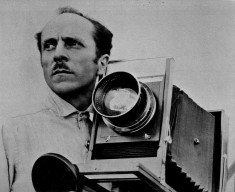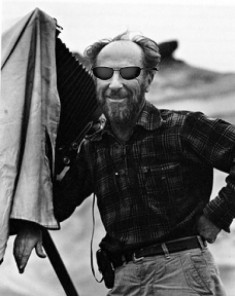| Edward Weston | |
|---|---|
 |
|
| Photographer | |
| Born | Mar. 24, 1886 Highland Park, Illinois |
| Died | Jan. 1, 1958 (at age 71) Big Sur, California |
| Nationality | American |
Edward Weston was an American photographer whose work covered a huge variety of subjects, ranging from portraits to landscapes, as well as various genre subjects. His interest in the American West led him to develop a style that was said to be quintessentially Californian.
Early Years
Weston was born on March 24, 1886, in Highland Park, Illinois. He grew up in Chicago, and at the age of 16, he was given a camera by his father. His mother died when he was only five, and his sister did much of the work in raising him.
By 1906, Weston’s photographic skills had progressed to the extent that he had a full-page photo of a Chicago scene published in the magazine Camera and Darkroom. In the same year, he moved to California, but then went back to Illinois to study at its School of Photography. He was not awarded a diploma because he had completed the course in much less than the time allowed and he refused to meet the school’s demand to pay for the full term anyway.
Starting a Career
In 1908, Weston went back to California, marrying a friend of his sister the following year. By 1911, he was sufficiently experienced to open a portrait studio in Tropico, which he ran for over a decade. He employed an artistic, soft-focus style and was widely recognized by his peers.
However, from 1915 onward, he grew unhappy with his style and started to work in a more abstract fashion, especially after 1920. This also lasted only a short time. In 1922, in New York City, he met Sheeler, Strand, and Stieglitz. From then onward, Weston’s photographs generally displayed a realistic simplicity, as was already evident in his pictures of a prominent steelworks in Ohio.
Later Photography Career
 Weston went to Mexico in 1923, opening a studio in partnership with Tina Modotti, then his girlfriend. He produced a significant set of nudes featuring her and met a large number of other well-known Mexican photographers. Their influence caused Weston to jettison his old soft-focus style absolutely, and instead he began to make meticulous photographic records of natural features.
Weston went to Mexico in 1923, opening a studio in partnership with Tina Modotti, then his girlfriend. He produced a significant set of nudes featuring her and met a large number of other well-known Mexican photographers. Their influence caused Weston to jettison his old soft-focus style absolutely, and instead he began to make meticulous photographic records of natural features.
In 1926, he returned to California, where he spent the rest of his life. With his young son Brett, he held a number of photographic exhibitions, after which he produced his most enduring works: studies of landscapes, natural close-ups, and further nudes.
In 1929, Weston and Brett moved to Carmel, where he became involved with the United States display at the Stuttgart photographic exhibition. Three years later, he joined a group that included Ansel Adams and championed pure photographic forms.
Final Years and Death
Weston received a Guggenheim Fellowship in 1937, becoming the first photographer to be granted this honor. He took many of his best known pictures at his Californian home, but was eventually forced to retire due to the onset of Parkinson’s disease.
Throughout the 1930s, Weston made extensive trips around the West. By 1946, he had been honored with a retrospective at New York’s Museum of Modern Art. He briefly experimented with color, but in 1948, Parkinson’s disease forced him to cease work. For the last decade of his life, he spent much of his time overseeing prints of his work made by Brett. Weston died in Carmel on New Year’s Day, 1958.